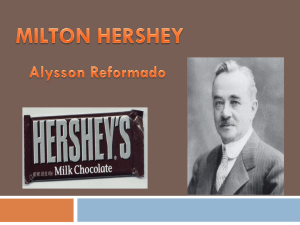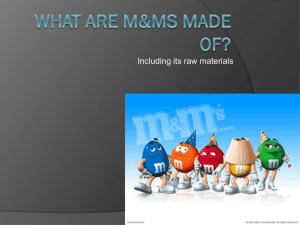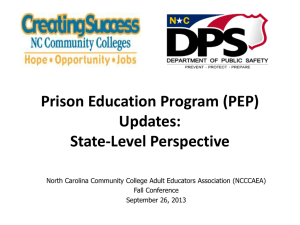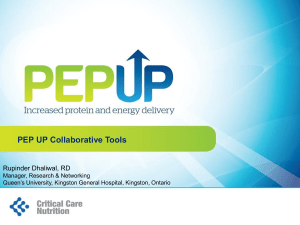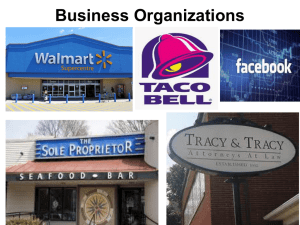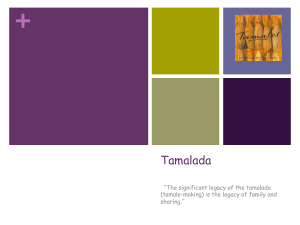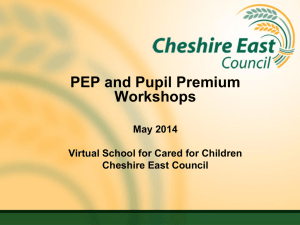Hershey`s Food Safety Concerns with Chocolate
advertisement
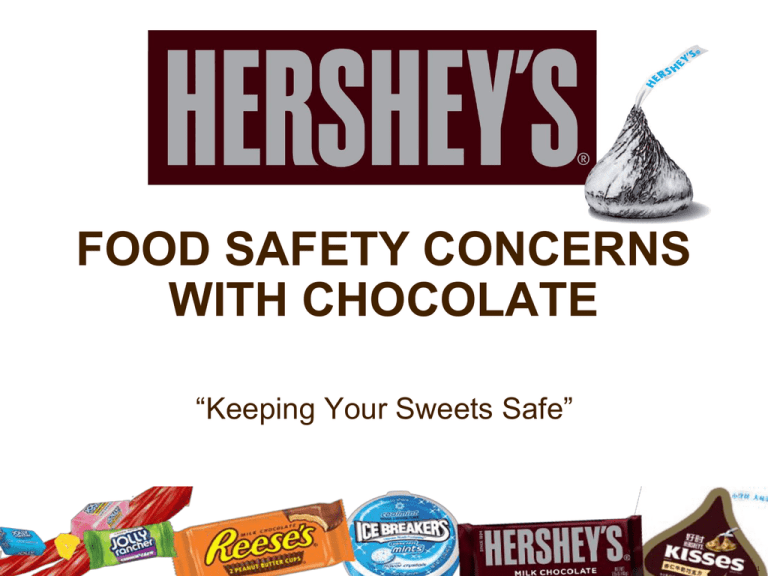
FOOD SAFETY CONCERNS WITH CHOCOLATE “Keeping Your Sweets Safe” 1 THE HERSHEY COMPANY Leading North American manufacturer quality chocolate and non-chocolate confectionery chocolate-related grocery products leader in the gum and mint category Global Manufacturing Operations Manufacturing facilities in US, Canada, Mexico, Brazil, China, India and Malaysia 2 FUN FACTS We use more than 1 BILLION pounds of milk a year almost 2 pounds of milk to make one pound of milk chocolate We make over 3.5 BILLION bars per year We make 13.6 BILLION kisses per year across all our kiss shaped brands! 4 days of production would make enough Kisses to stretch from New York City to Los Angeles 1 day of Syrup production would make 12.2 million 8 oz glasses of chocolate milk 1 week of production would make enough snack size bars to completely cover 4 football fields 3 HERSHEY GLOBAL BRANDS 4 HERSHEY LOCAL JEWELS 5 POTENTIAL FOOD SAFETY RISKS Salmonella Chocolate Products • Cadbury 2006 • Nesquick Chocolate Powder 2012 • Chocolate Marshmallow Eggs 2013 Peanut Products • Con Agra Peter Pan Peanut Butter 2007 • Peanut Corporation of America 2008 6 POTENTIAL FOOD SAFETY RISKS Listeria Dairy Ingredients Allergen Concerns Peanut, Almond, other Tree Nuts, Milk, Soy, Wheat Foreign Material Metal on Metal in processing equipment 7 WHY IS FOOD SAFETY IMPORTANT Consumer well being Hershey is an $8 billion brand, and growing Global Distribution Our brand is our name 8 WHO IS RESPONSIBLE FOR FOOD SAFETY Everyone Identify the “right” thing to do Train people on the “right” thing Practice the “right” thing Empower employees to do the “right” thing “Doing The Right Things Right Everyday” 9 CHALLENGES TO FOOD SAFETY Global Manufacturing and Distribution Standards differ Infrastructure differs Cultures differ Food Safety is equal Diverse product line presents different challenges 10 GLOBAL FOOD SAFETY SYSTEM Product Excellence Program HACCP Based Approach Food Safety Food Quality Regulatory Compliance Assure Safe, High Quality Products Across the Supply Chain Sets expectations, defines programs 11 PRODUCT EXCELLENCE PROGRAM Identify Product quality and safety concerns Control Develop systems to control product quality / safety concerns Monitor The effectiveness of the controls 12 PEP IS THE WAY WE OPERATE PEP GOVERNANCE 13 DRIVERS OF INNOVATION New manufacturing facility New manufacturing process New products New market New regulations New technology 14 THE INNOVATION PROCESS 15 DESIGN QUALITY IN Overlays the innovation / commercialization process Quality Design Review New Material / New Product / New Process Product Qualification Commercialization 16 NEW MATERIAL / NEW PRODUCT Product review Recipe development Regulatory review – where manufactured and where sold Label review Dietary concerns – Kosher, Halal Key requirements identification • Claims – Peanut Free, Sugar Free, Reduced Fat • Certifications – Organic, Rain Forest Alliance • Unique product attributes • GMOs 17 NEW PROCESS Process review Process Controls Product Attributes Product Safety Equipment review Sanitary Design Ability to clean effectively Change over capability 18 PEP IS THE WAY WE OPERATE PEP GOVERNANCE 19 SUPPLY CHAIN Ingredient Packaging Receiving Manufacturing Shipping Warehouse Distribution Retail / Consumer 20 SUPPLIER QUALITY PROGRAM Supplier Qualification Supplier Approval Program Ingredients Packaging • Food Contact Packaging - qualify as an ingredient Equipment Contract Services 21 RECEIVING Inbound Inspection Process Load Conditions Carrier Conditions Ensure Correct Material, Approved Supplier • Sampling, Certificate of Analysis 22 MANUFACTURING Prerequisite programs form the foundation Premises • Food Defense Facility • Structure • Utilities – air, water, steam, lighting • Chemical Compliance and Control • Integrated pest management • Waste management and disposal 23 MANUFACTURING Prerequisite programs form the foundation Equipment • Product protection – physical contamination control • Cleaning and sanitation • Calibration • Allergen Control People • Dress and grooming • Plant practices • Training 24 MANUFACTURING Master Control Plan Food Safety Food Quality Regulatory Control Key control points Chemical, Biological, Physical, Regulatory Monitoring, Corrective Action, Verification, Validation 25 SHIPPING Program modeled on the Sanitary Food Transportation Act of 2005 Sanitary Transportation Controlled Shipping Conditions 26 WAREHOUSE / DISTRIBUTION Facility Design Construction style and material Appropriate Storage Conditions Integrated Pest Management Program Stock Rotation Controlled Storage Conditions 27 RETAIL / CONSUMER Customers - Confection Protection at Retail Warehousing and Storage Environment Pest Management Stock Rotation Customer and Consumer Feedback 28 PEP IS THE WAY WE OPERATE PEP GOVERNANCE 29 GOVERNANCE Program and Policy oversight Shelf life Product coding Traceability Incubation hold Recall program management, mock recall activities 30 GOVERNANCE Assessment program Internal manufacturing facilities Compliance to GFSI certification requirements Assessments across the supply chain 31 PEP IS THE WAY WE OPERATE PEP GOVERNANCE 32 WHAT DOES FOOD SAFETY MEAN TO HERSHEY “Doing The Right Things Right Everyday” Identify the “right” thing to do Train people on the “right” thing Practice the “right” thing Empower employees to do the “right” thing 33 QUESTIONS?

